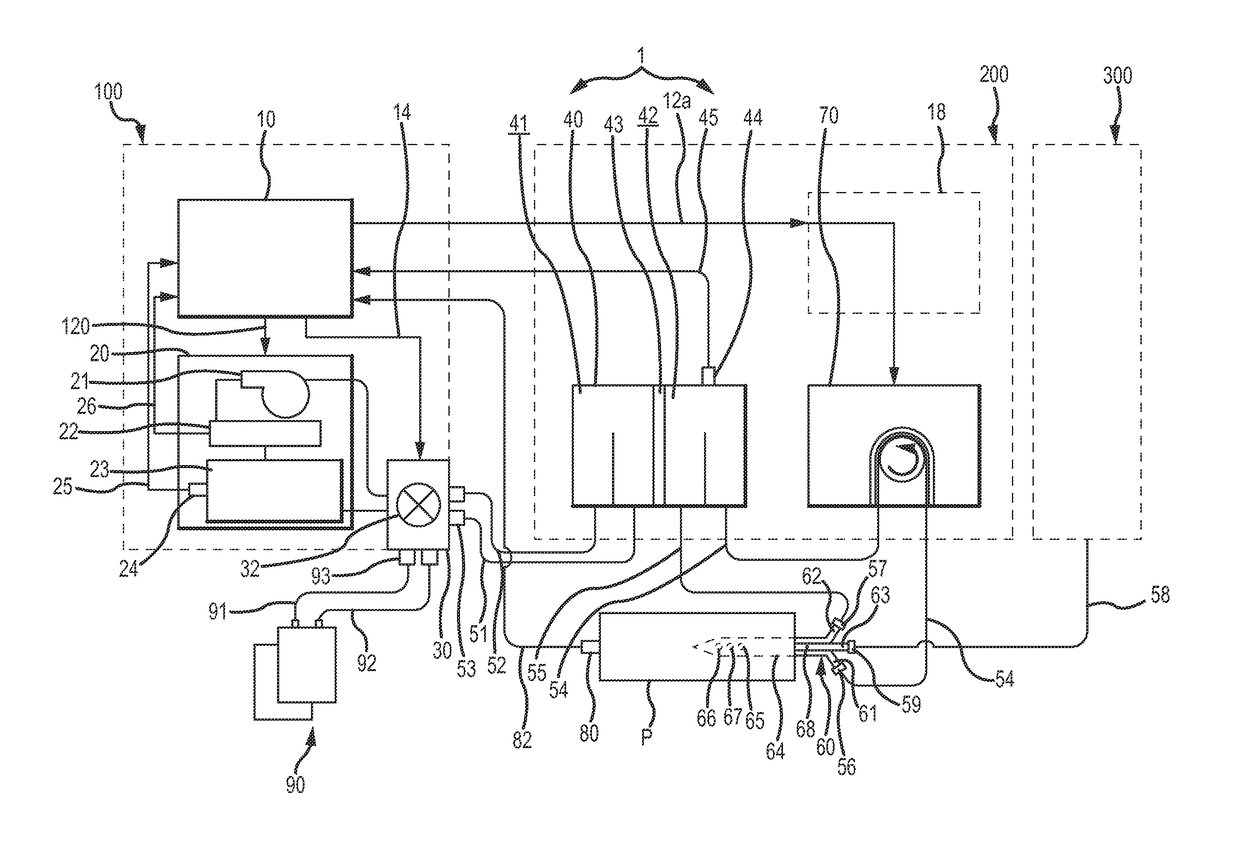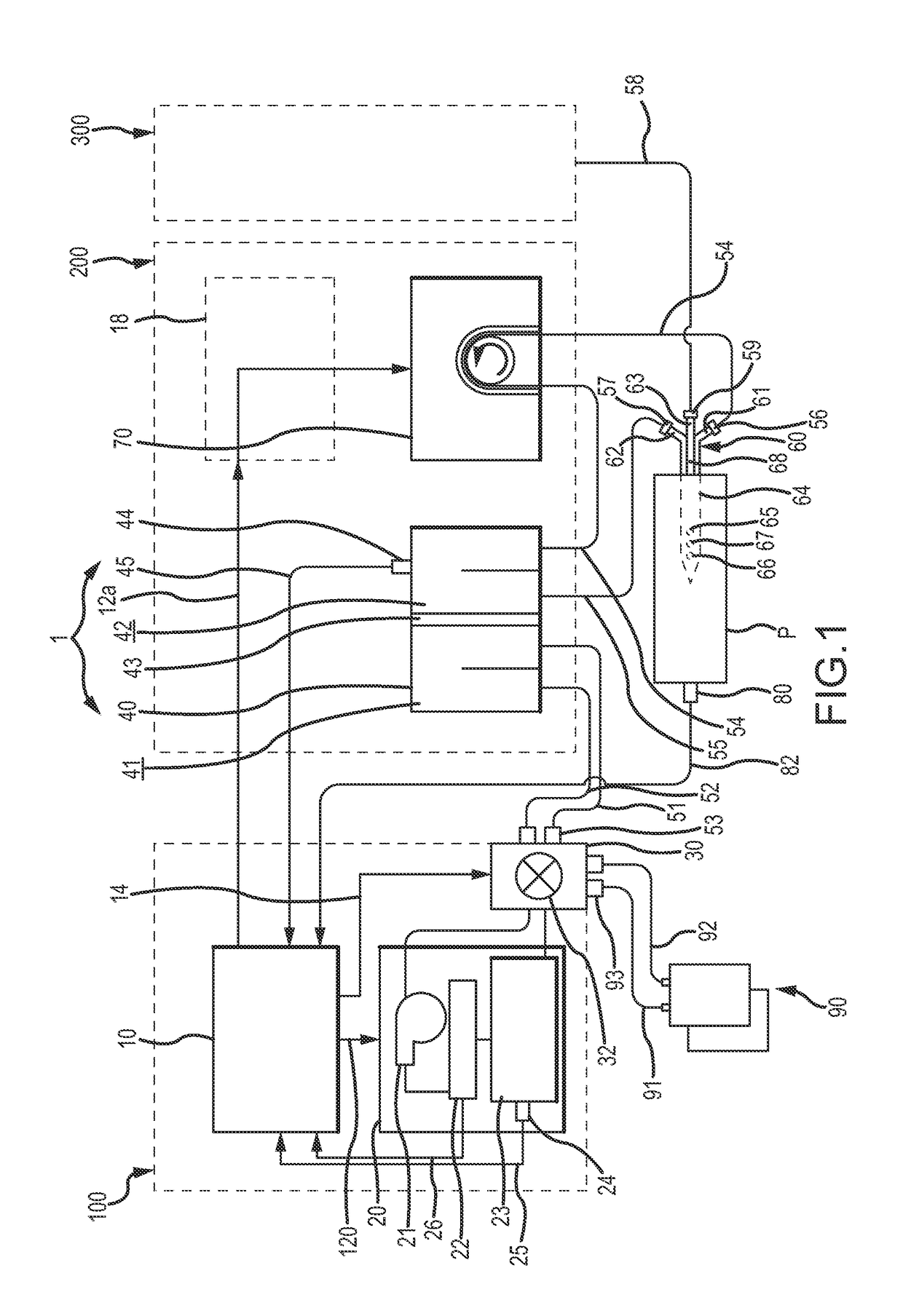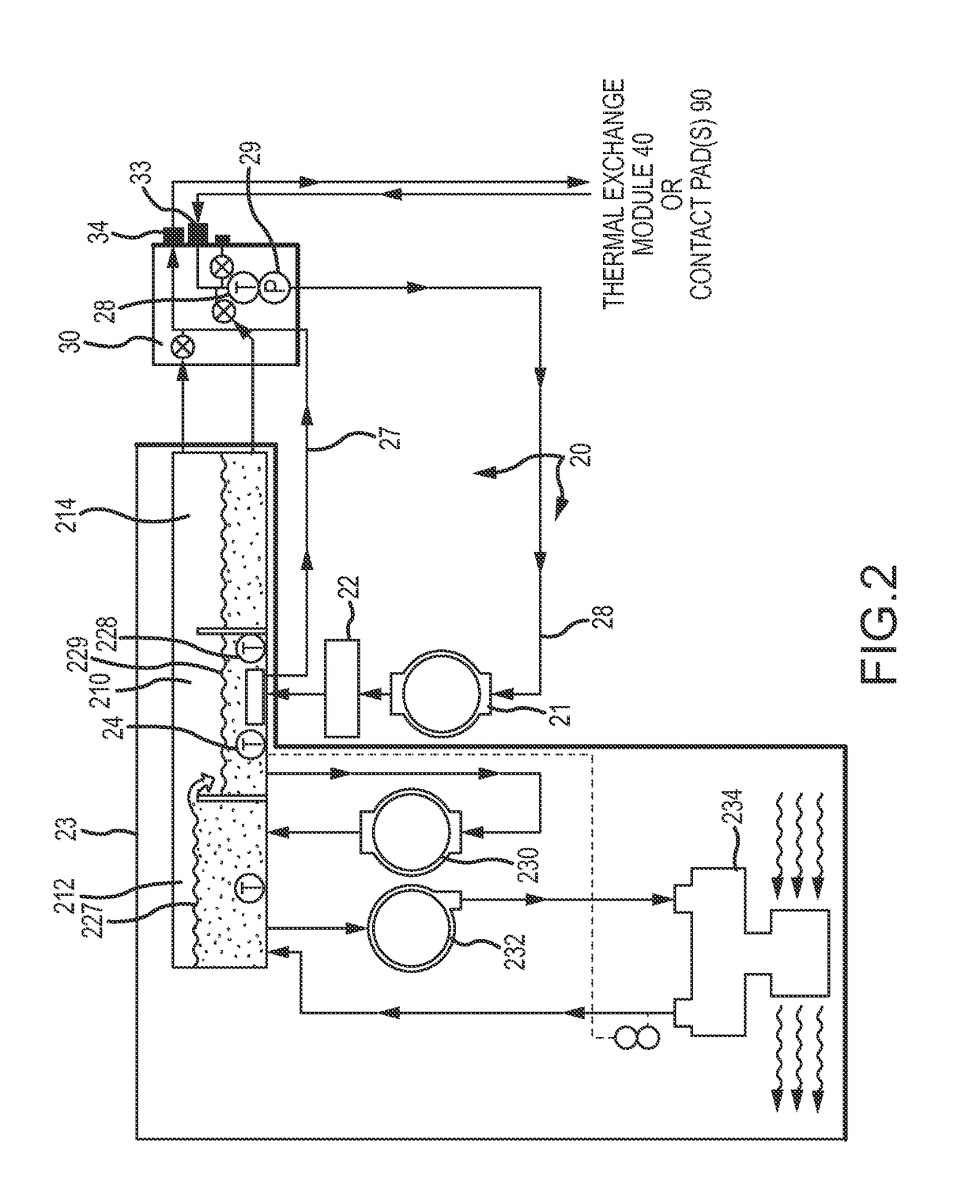System and method for extracorporeal temperature control
a technology of extracorporeal blood and temperature control, which is applied in the field of systems and methods for use in extracorporeal blood temperature control and patient temperature control, can solve the problems of limiting neurological damage, taking hours to reach the maximum level of brain damage resulting from stroke, etc., and achieves rapid systemic cooling of patients, induce hypothermia, and facilitate rapid initiation
- Summary
- Abstract
- Description
- Claims
- Application Information
AI Technical Summary
Benefits of technology
Problems solved by technology
Method used
Image
Examples
Embodiment Construction
[0056]FIG. 1 schematically illustrates one embodiment of a system 1 for extracorporeal blood temperature control and patient temperature control. The system 1 includes a controller 10 for providing output signals for use in the operation of a fluid conditioning assembly 20 so as to cool, optionally warm, and circulate fluid through a thermal exchange module 40. In turn, the fluid conditioning assembly may include a fluid pump 21 for circulating the fluid to a heat exchanger 23 for passage to a fluid coupling interface 30. In one implementation, the controller 10, fluid conditioning assembly 20, and fluid coupling interface 30 may be supportably interconnected to a first support structure 100.
[0057]A first fluid circulation line 51 (e.g., a length of flexible tubing) and a second fluid circulation line 52 (e.g., a length of flexible tubing) may each be fluidly interconnected at one end to the fluid coupling interface 30 and may each be fluidly interconnected at another end to the the...
PUM
 Login to View More
Login to View More Abstract
Description
Claims
Application Information
 Login to View More
Login to View More - R&D
- Intellectual Property
- Life Sciences
- Materials
- Tech Scout
- Unparalleled Data Quality
- Higher Quality Content
- 60% Fewer Hallucinations
Browse by: Latest US Patents, China's latest patents, Technical Efficacy Thesaurus, Application Domain, Technology Topic, Popular Technical Reports.
© 2025 PatSnap. All rights reserved.Legal|Privacy policy|Modern Slavery Act Transparency Statement|Sitemap|About US| Contact US: help@patsnap.com



